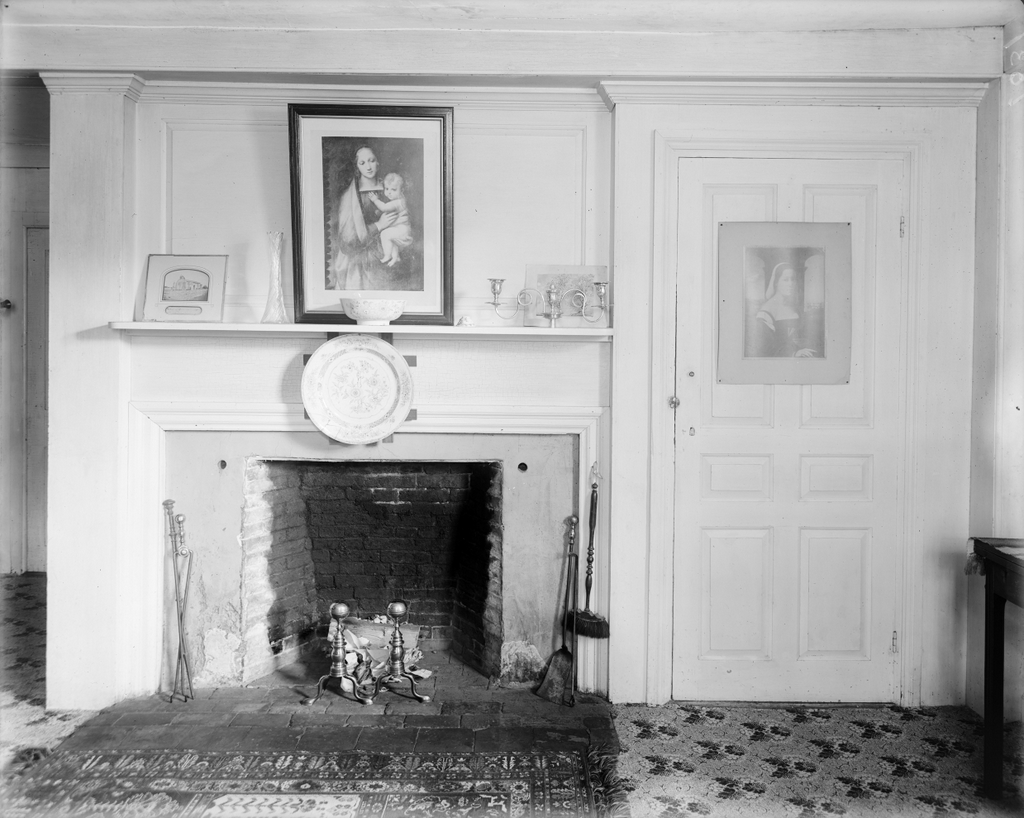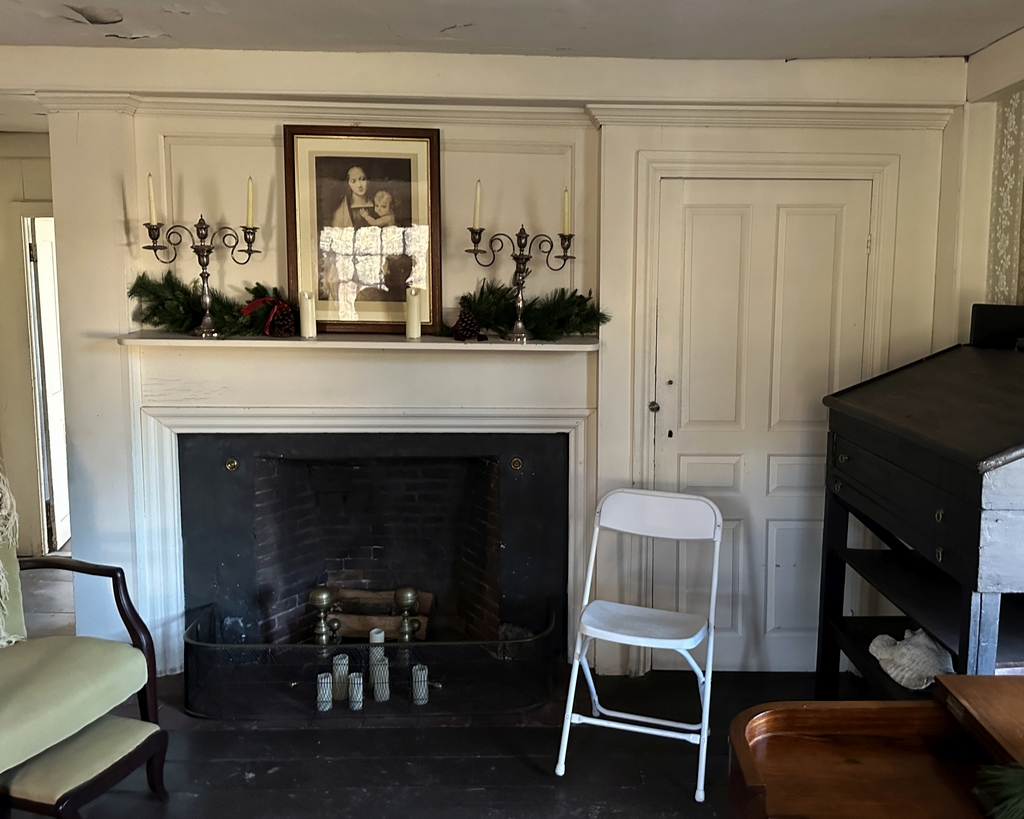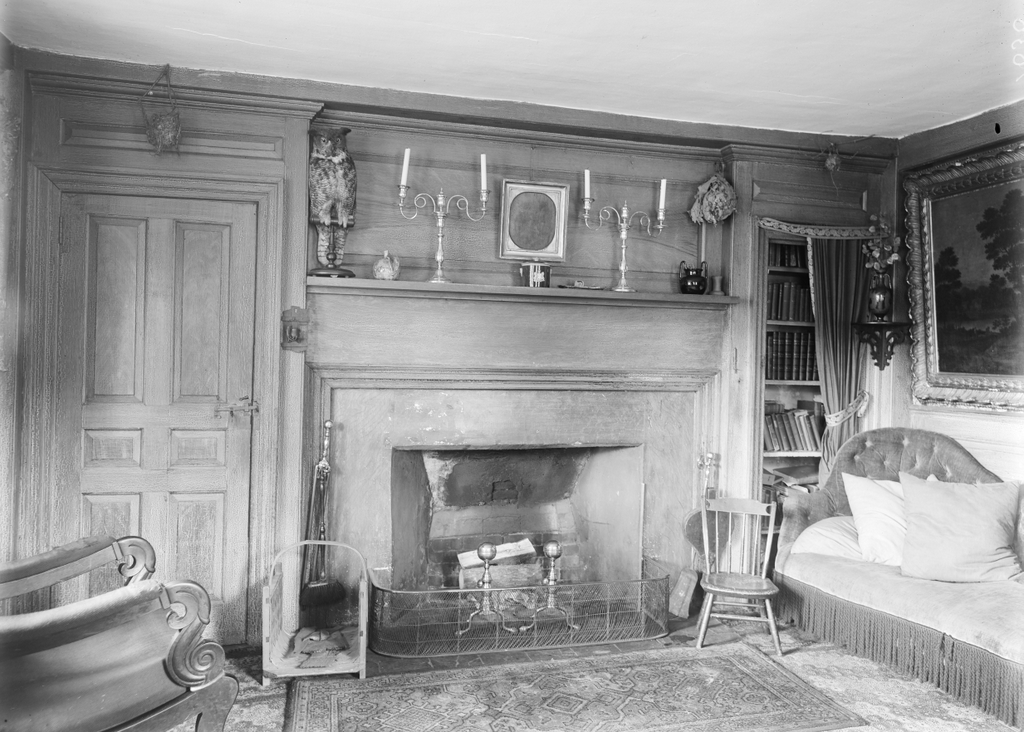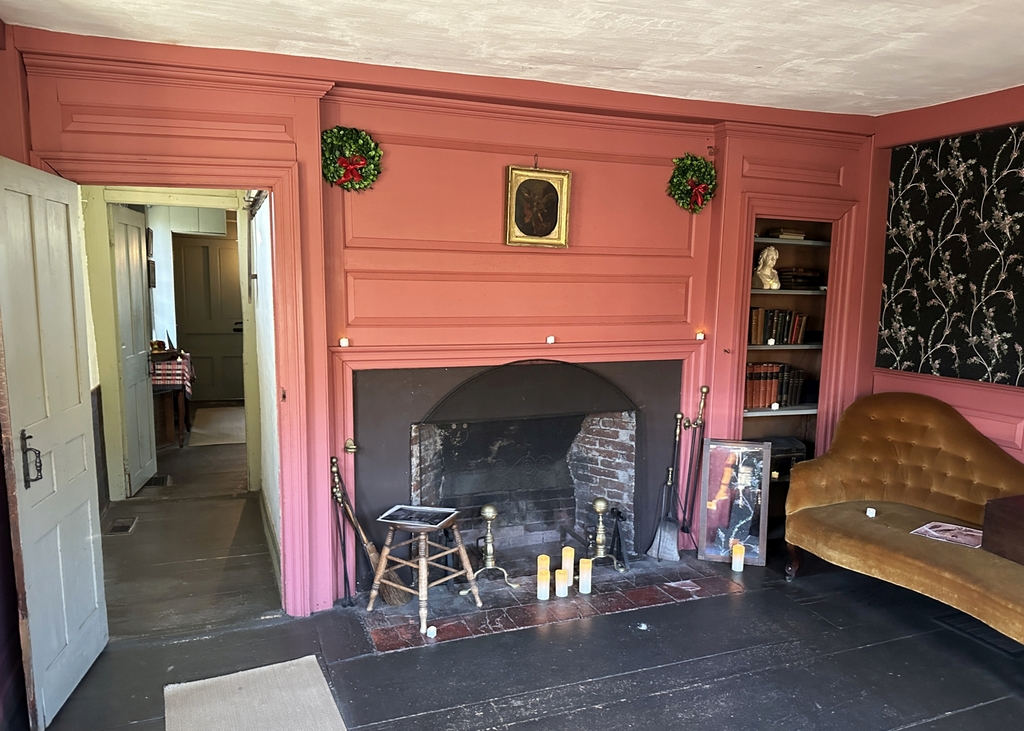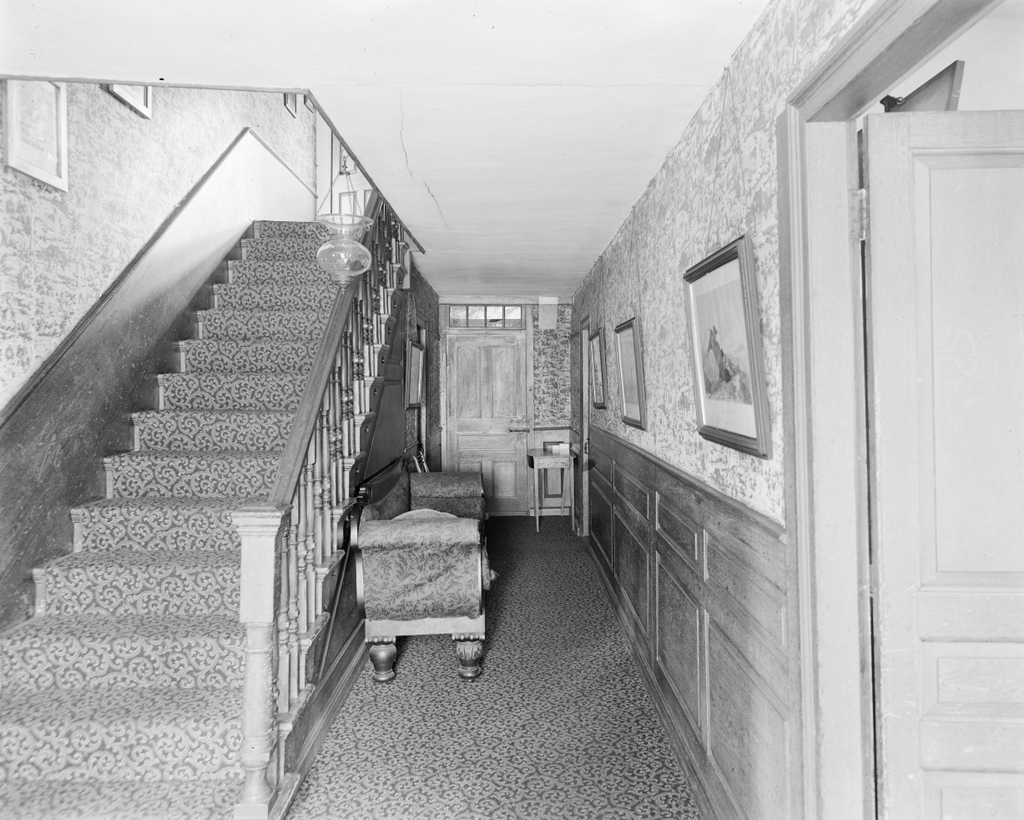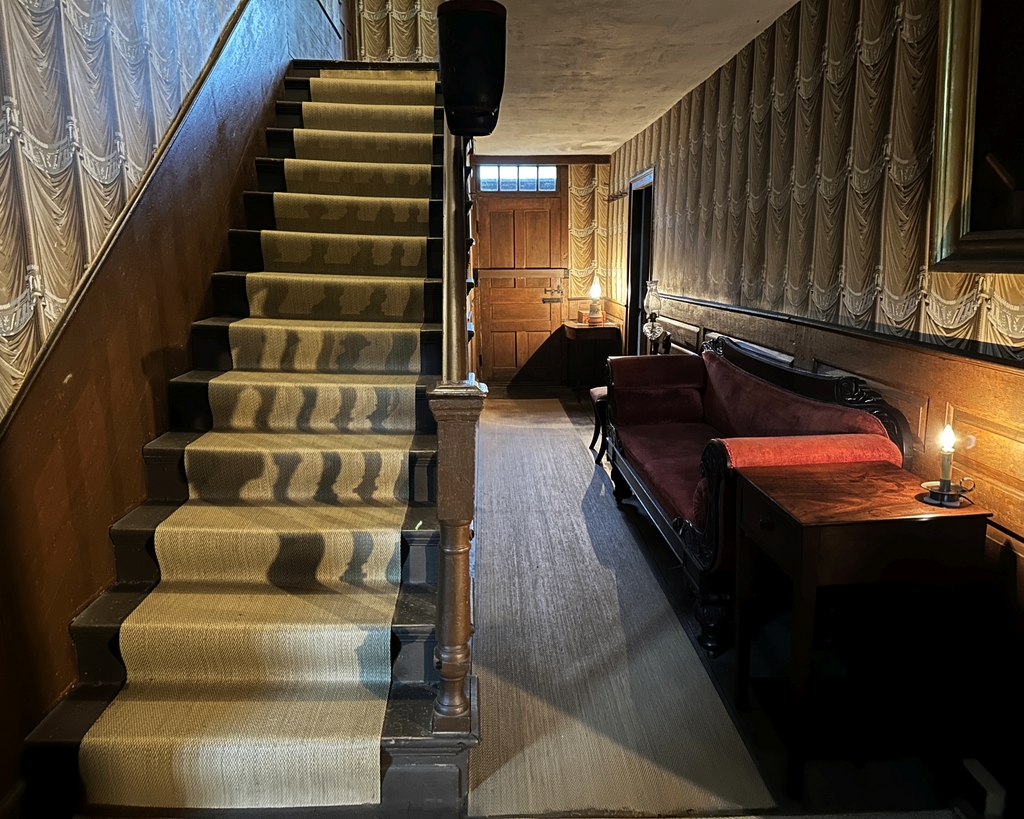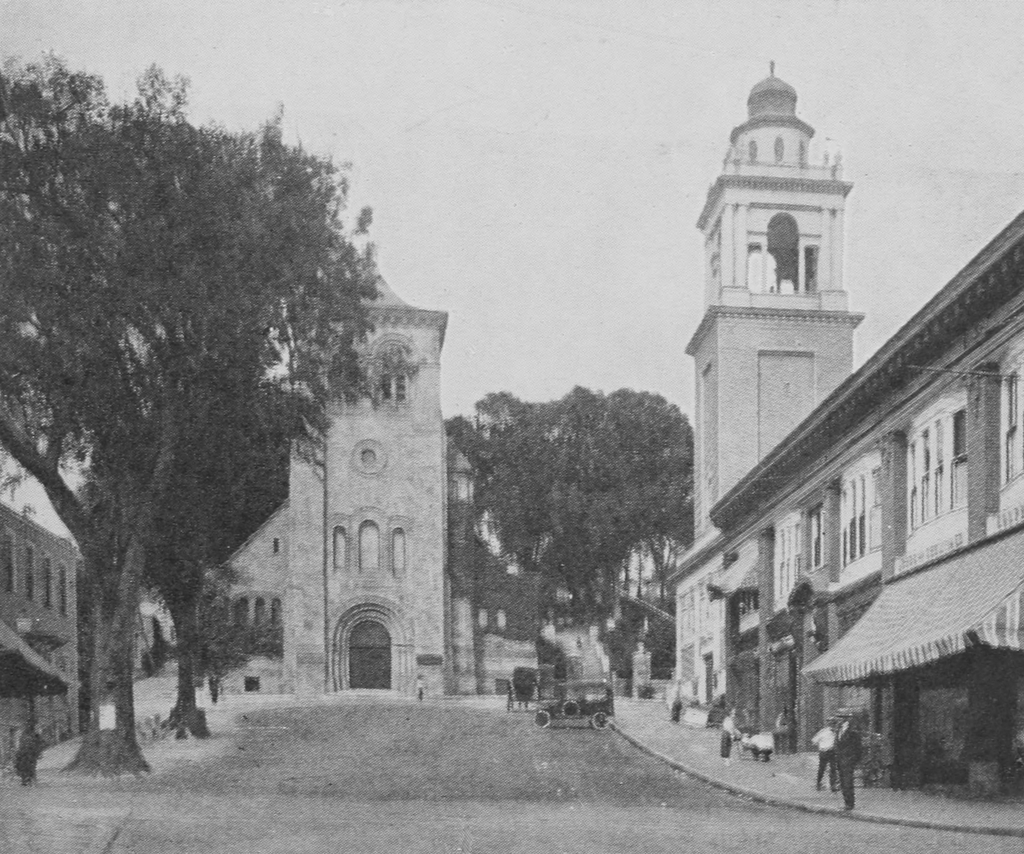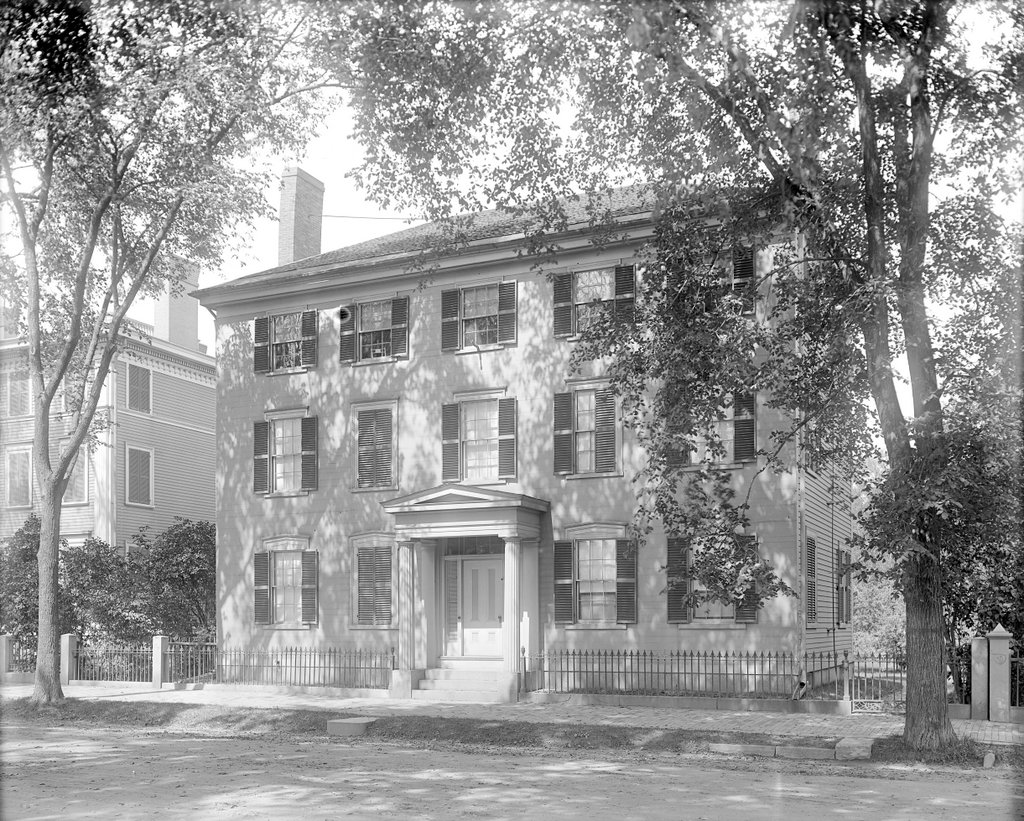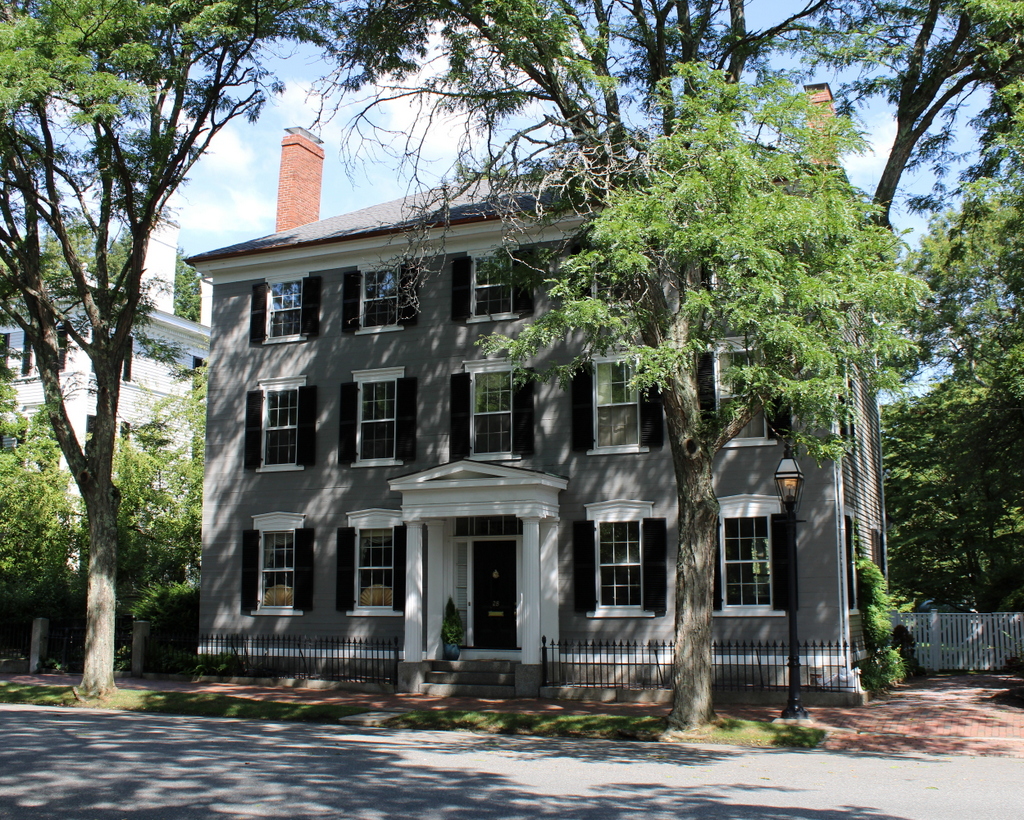The north parlor at the Old Manse in Concord, probably around 1890-1910. Image courtesy of the Phillips Library at the Peabody Essex Museum, Frank Cousins Glass Plate Negatives Collection.
The scene in 2023:
These two photos show the parlor in the northeast corner of the first floor at the Old Manse. In contrast to the south parlor, which was used primarily by family and close friends, the north parlor was historically a more formal space for entertaining guests, and would have generally had finer decorations and furnishings.
As described in more detail in an earlier post, the Old Manse was built in 1770 as the home of William and Phebe Emerson. William was the pastor of the church in Concord, but he died only a few years later in 1776, while serving as a chaplain in the Continental Army. His successor at the church was Ezra Ripley, who would go on to serve as pastor for 63 years. Ripley also married Emerson’s widow Phebe, and they lived here in this house for the rest of their lives.
The house remained in the Ripley family and their descendants for many years, but the house is best remembered for its association with two prominent writers who lived here early in their careers. From 1834 to 1835, William and Phebe Emerson’s grandson, Ralph Waldo Emerson, lived in the house, and then from 1842 to 1845 the family rented the house to Nathaniel Hawthorne and his newlywed wife Sophia. Both Emerson and Hawthorne used the same upstairs room as their study, and they each wrote some of their earliest published works there.
The top photo shows the north parlor at some point around the turn of the 20th century, when the house was owned by Ezra and Phebe’s granddaughter Sophia Thayer. Her daughter, Sarah Ames, subsequently inherited the house, and she owned it until her death in 1939. Sarah’s husband then donated the house and all of its contents to the Trustees of Reservations, a nonprofit conservation and historic preservation organization in Massachusetts.
Today, the house is still owned by the Trustees and operated as a museum. Here in the North Parlor, the highlights include an 1864 Steinway piano, which is partially visible in the lower right corner of the second photo, and the standing desk beyond it to the right. The desk originally belonged to Ezra Ripley, and it was there that he composed over 3,000 sermons during his more than six decades of ministry at the church.

